|
Micronizing Processing Services and Equipments
Toll Processing Services / Grinding, Blending, Drying, Screening and more /
Application Testing / Processing and Equipment Application Testing /
Powder Processing Equipment / Services Scaleable To Any Application Scale
Knowledge base :
Particle size,
Granulometry (morphology), Particle-Size Distribution, Micronization, Jet mill, Methods of drying,
Spray drying,
Air ClassifierTargeted drug delivery,
Nutrient,
Atwater system,
Uniformity of content

|
Particle size is a notion introduced
for comparing dimensions of solid particles
(flecks), liquid particles
(droplets),
or gaseous particles
(bubbles).
The notion of particle size applies to colloidal particles, particles in
ecology, particles present in granular material (whether airborne or
not), and particles that form a granular material (see also grain size).
In mathematical
morphology, granulometry is
an approach to compute a size distribution of grains in binary images,
using a series of morphological opening operations.
It was introduced by Georges Matheron in
the 1960s, and is the basis for the characterization of the concept of size in
mathematical morphology.
The particle-size distribution (PSD) of
a powder, or granular material, or particles dispersed in fluid,
is a list of values or a mathematical function that defines the relative amount, typically by mass, of particles present according to size.[1] Significant
energy is usually required to disintegrate soil, etc. particles into the PSD that is then called a grain size distribution.[2]
|
|
Micronization is the process of reducing the average diameter of a solid material's particles. Traditional techniques for micronization focus on mechanical means, such as milling and grinding.
Modern techniques make use of the properties of supercritical fluids and manipulate the principles of solubility.
The term micronization usually refers to the reduction of average particle diameters to the micrometer range, but can also describe further reduction to the nanometer scale. Common applications include the production of active chemical ingredients, foodstuff ingredients, and pharmaceuticals. These chemicals need to be micronized to increase efficacy.
|

|
A jet mill grinds materials
by using a high speed jet of compressed air or inert gas to impact particles into each other.[1] Jet
mills can be designed to output particles below a certain size while continuing to mill particles above that size, resulting in a narrow size distribution of the resulting product.[2] Particles
leaving the mill can be separated from the gas stream by cyclonic separation.
Typical parameters :
- * Diameter of mill: from 0.05 meters to 1 meter (from 2 inches to 42 inches)
- * Gas pressure: 8.3 Bar (120 PSI)
- * Starting particle size: 800 microns or less, or as limited by the size of the inlet of
- the feed venturi
- * Final particle size: down to 0.5 microns
|

|

Ultrafiltration for a swimming pool |
Spray drying is a method of producing a dry powder from a liquid or slurry by rapidly drying with a hot gas. This is the preferred method of drying of many thermally-sensitive materials such as foods and pharmaceuticals. A consistent particle size distribution is a reason for spray drying some industrial products such as catalysts. Air is the heated drying medium; however, if the liquid is a flammable solvent such as ethanol or the product is oxygen-sensitive then nitrogen is
used.[1]
All spray dryers use some type of atomizer or spray nozzle to disperse the liquid or slurry into a controlled drop size spray. The most common of these are rotary disk and single-fluid high pressure swirl nozzles. Atomizer wheels are known to provide broader particle size distribution, but both methods allow for consistent distribution of particle size.[2] Alternatively,
for some applications two-fluid or ultrasonic nozzles are used. Depending on the process requirements, drop sizes from 10 to 500 μm can be achieved with the appropriate choices. The most common applications are in the 100 to 200 μm diameter range. The dry powder is often free-flowing.
|
|
An air classifier is an industrial machine which separates materials by a combination of size, shape, and density.
It works by injecting the material stream to be sorted into a chamber which contains a column of rising air. Inside the separation chamber, air drag on the objects supplies an upward force which counteracts the force of gravity and lifts the material to be sorted up into the air. Due to the dependence of air drag
on object size and shape, the objects in the moving air column are sorted vertically and can be separated in this manner.
Air classifiers are commonly employed in industrial processes where a large volume of mixed materials with differing physical characteristics need to be separated quickly and efficiently. Air classifier is helpful for cement, air pollution control, food processing, pigments, pharmaceutical, cosmetics or chemical industries. One such example is in recycling centers, where various types of metal, paper, and plastics arrive
mixed together and need to be sorted before further processing can take place.
|

|
Leading with Quality, Performance and Cost

Our partners,
Fluid Energy Processing and Equipment Company is Since 1955, Fluid Energy Processing and Equipment Company has specialized in the design and manufacture of Ultra-Fine Grinding, Classifying and Flash Drying Systems, as well as Toll Processing / Contract Manufacturing Operations (CMO) for fine powders and ultra-fine powders. Much more than a Jet Milling Operation, today we are recognized as a world leader in powder processing solutions. We have a long history of working with cosmetics, food grade, pigments, specialty chemicals and many other industries. Headquartered in
Telford, PA – and serving customers worldwide – Fluid Energy is an innovative industry leader that offers Research & Development, CMO for powder processing and Equipment for all of your powder processing needs ......

|
Toll Processing Services
Grinding, Blending, Drying, Screening and more
Fluid Energy is recognized as a leader for Toll Manufacturing in the Powder Processing Industry.
Fluid Energy performs blending, jet milling, flash drying and screening operations, producing a consistently high quality product for our customers.
Read More |
|

|
Application Testing
Processing and Equipment Application Testing
We use the most advanced laser particle size analyzer, mills and highly calibrated testing equipment in our laboratory.
Our application engineers and lab technicians will help determine the most efficient powder processing methods for your needs.
Read More |

|
Powder Processing Equipment
Services Scaleable To Any Application
Our product line includes three unique designs of jet mills, flash dryer and other micronization equipment custom designed for your floor plan.
Contact us today and we can assemble a solution that works best for you and your operation.
Read More |
Powder Processing Division
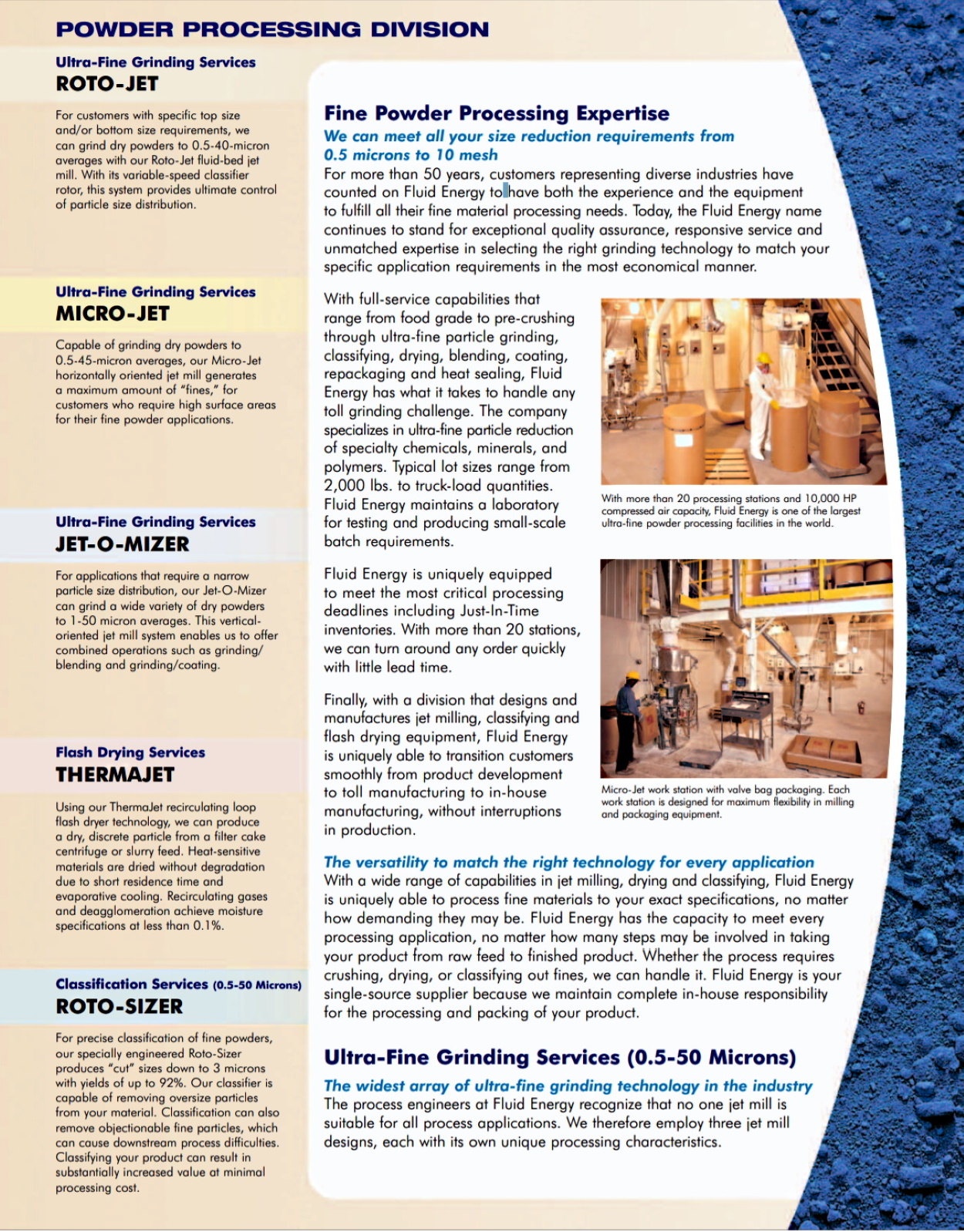 ISO Certification, Quality Control
ISO Certification, Quality Control
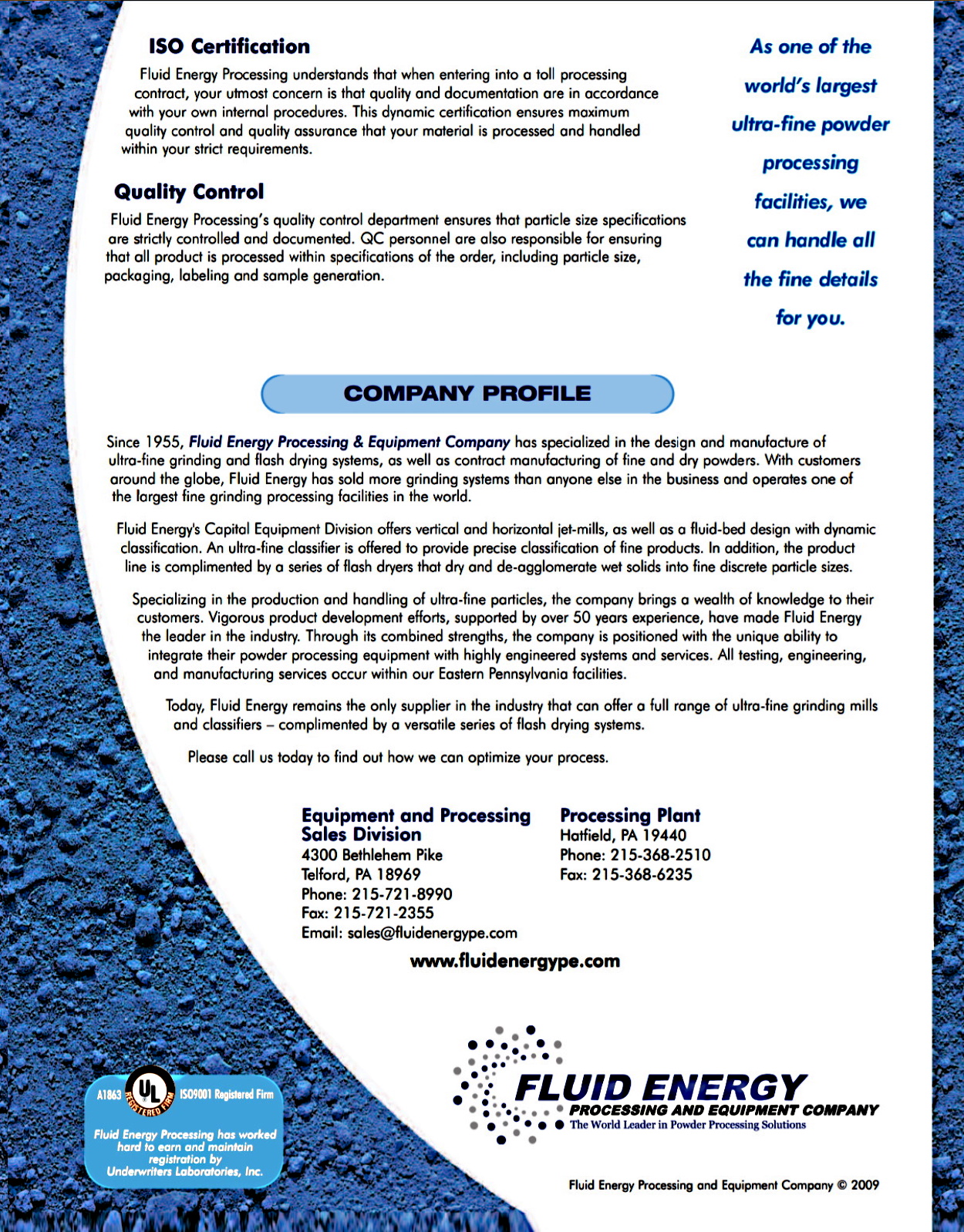 The World Leader in Powder Processing Solutions
The World Leader in Powder Processing Solutions
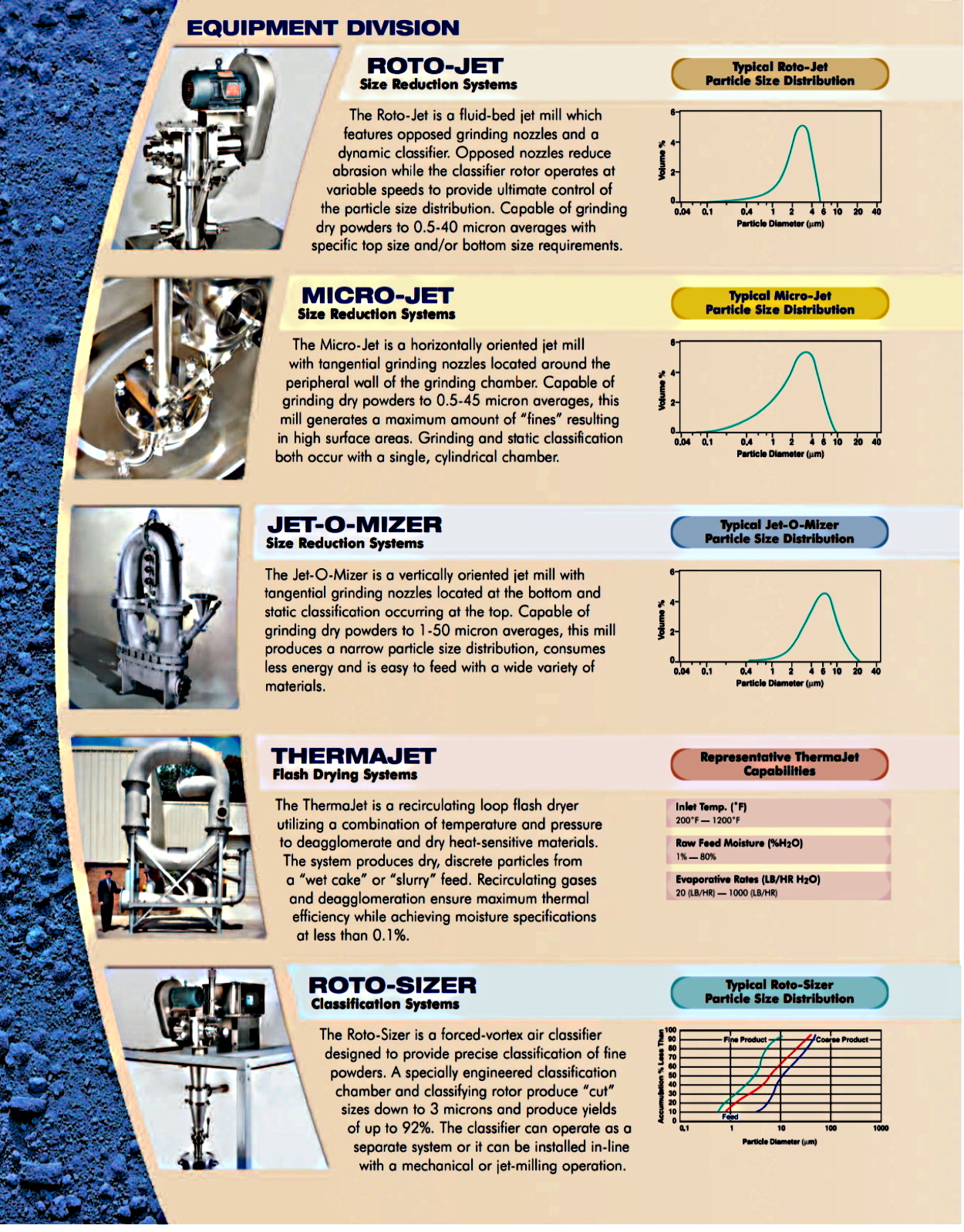 Equipment Systems
Equipment Systems
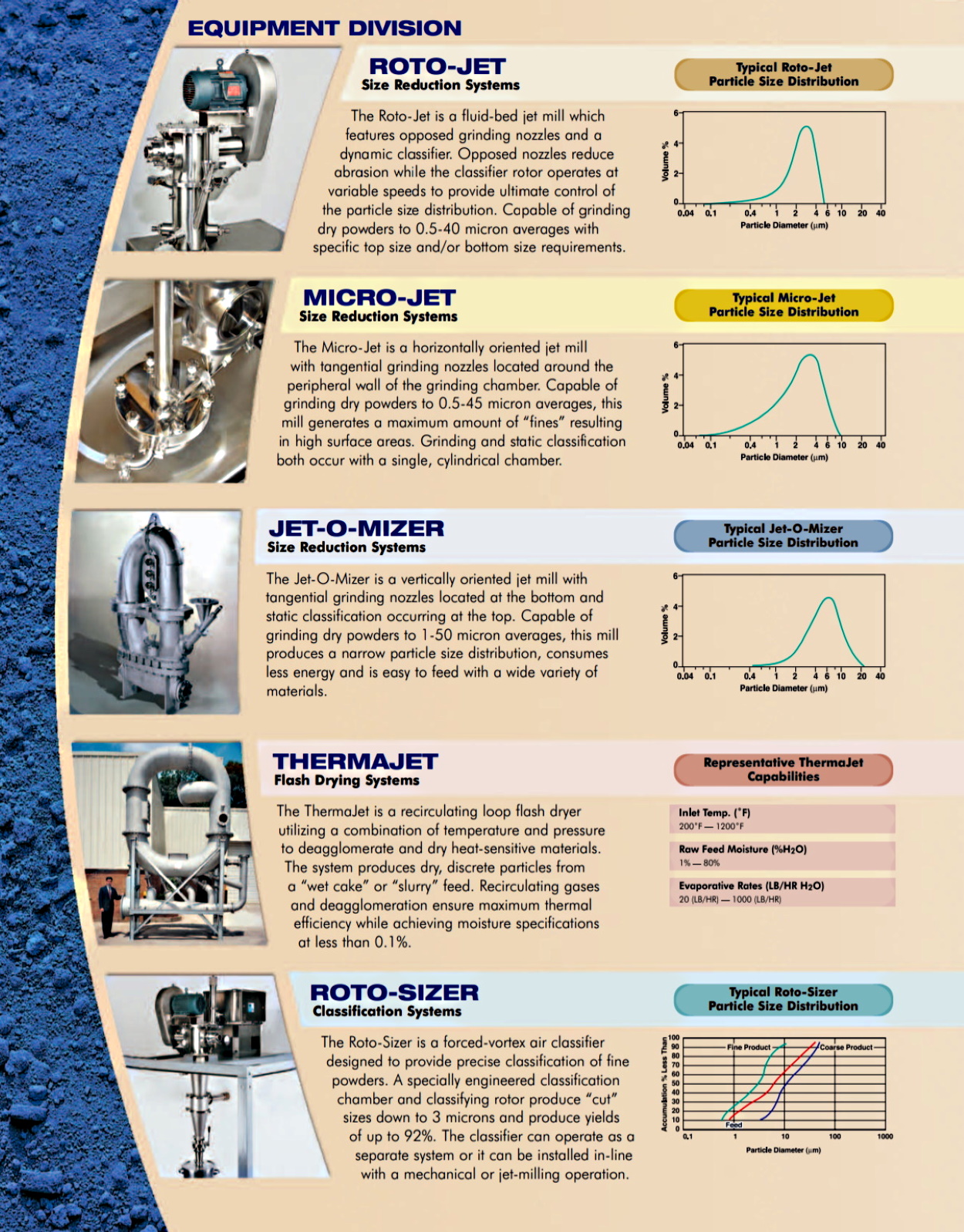 Equipment Features & Applications
Equipment Features & Applications
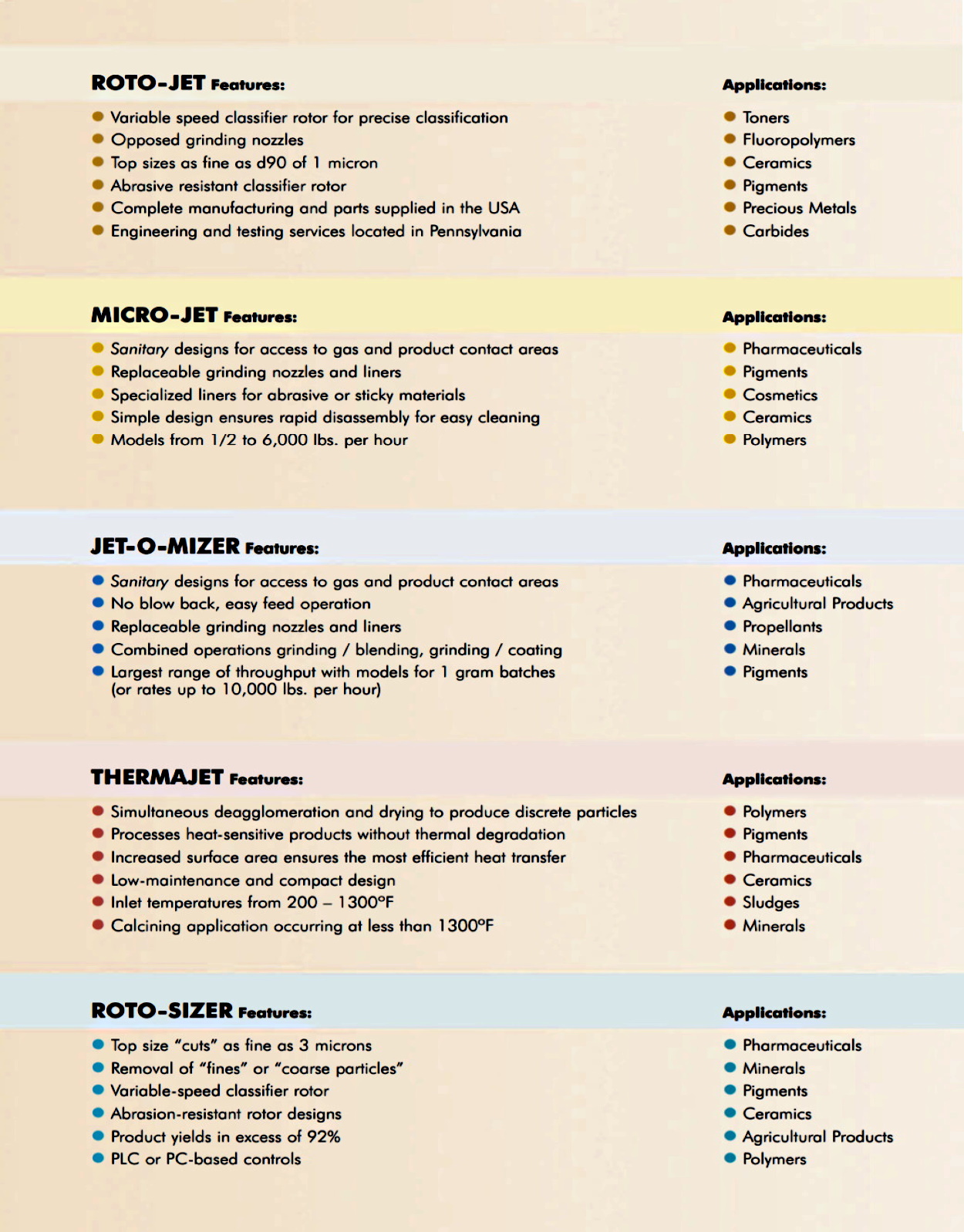 Typical Equipment Systems
Typical Equipment Systems
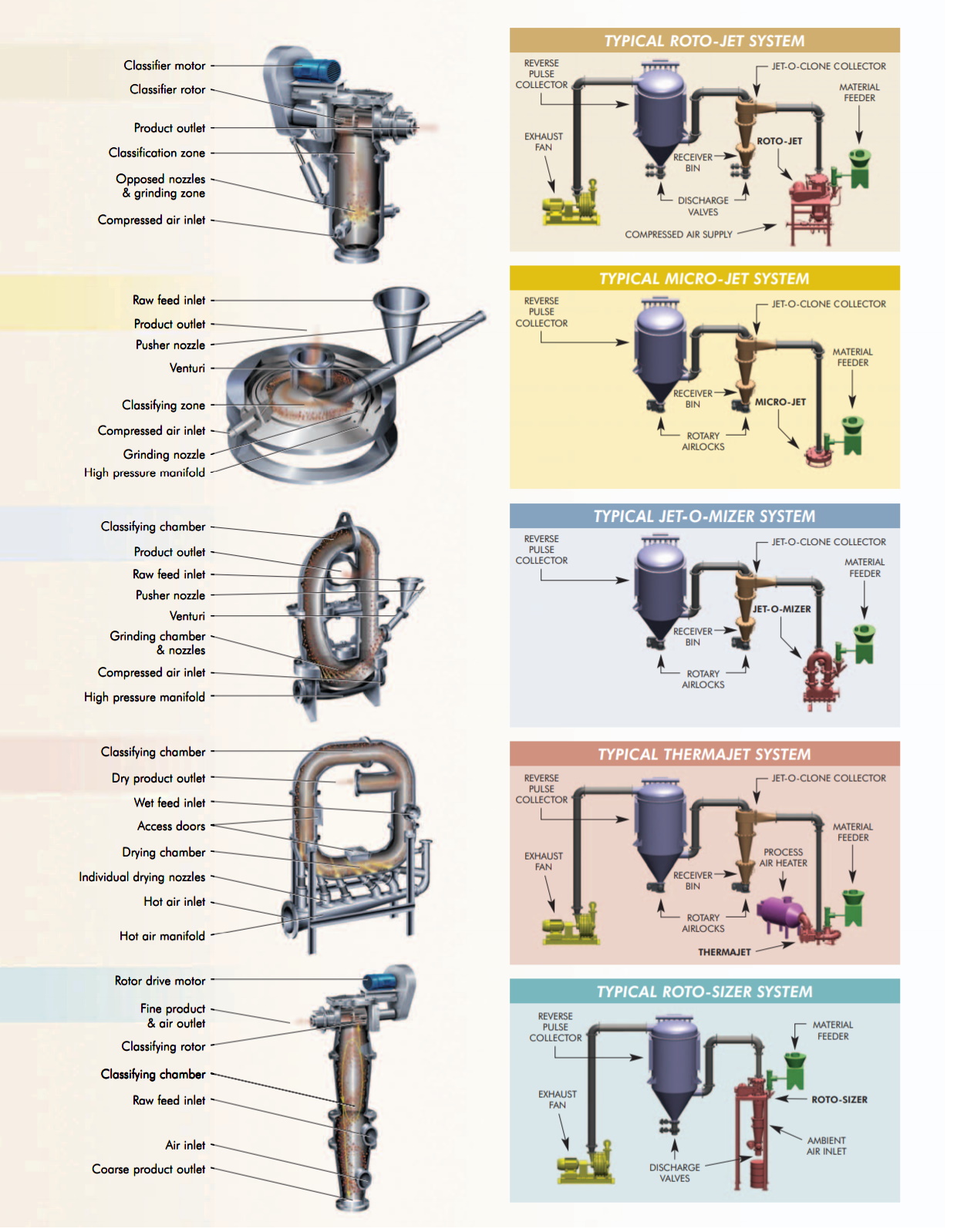
|